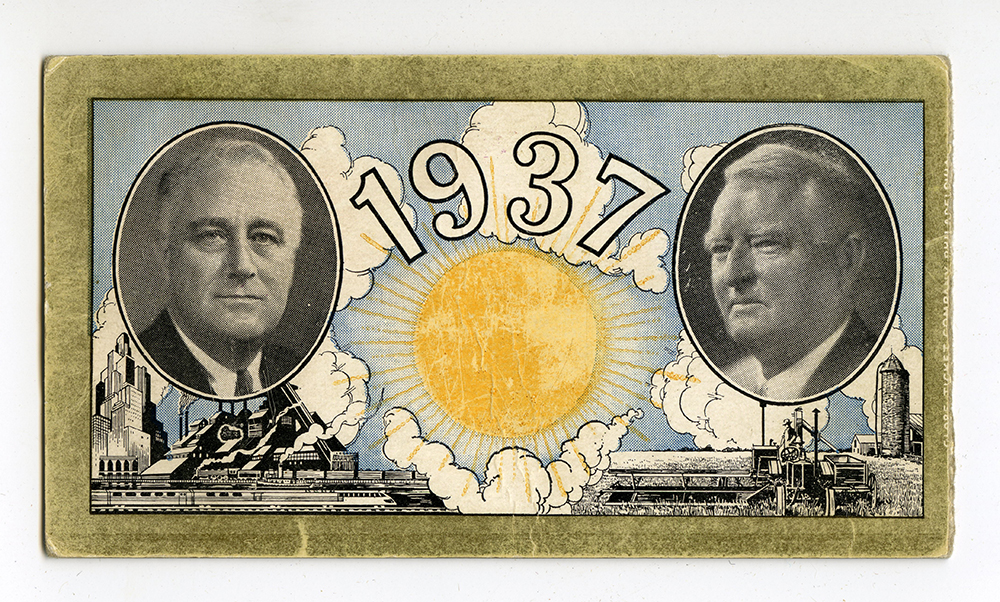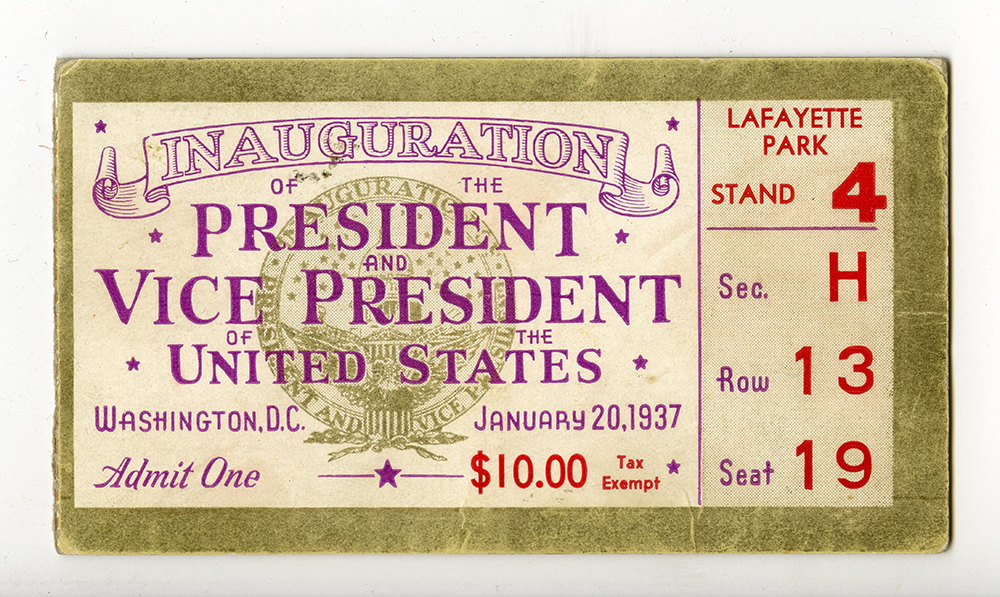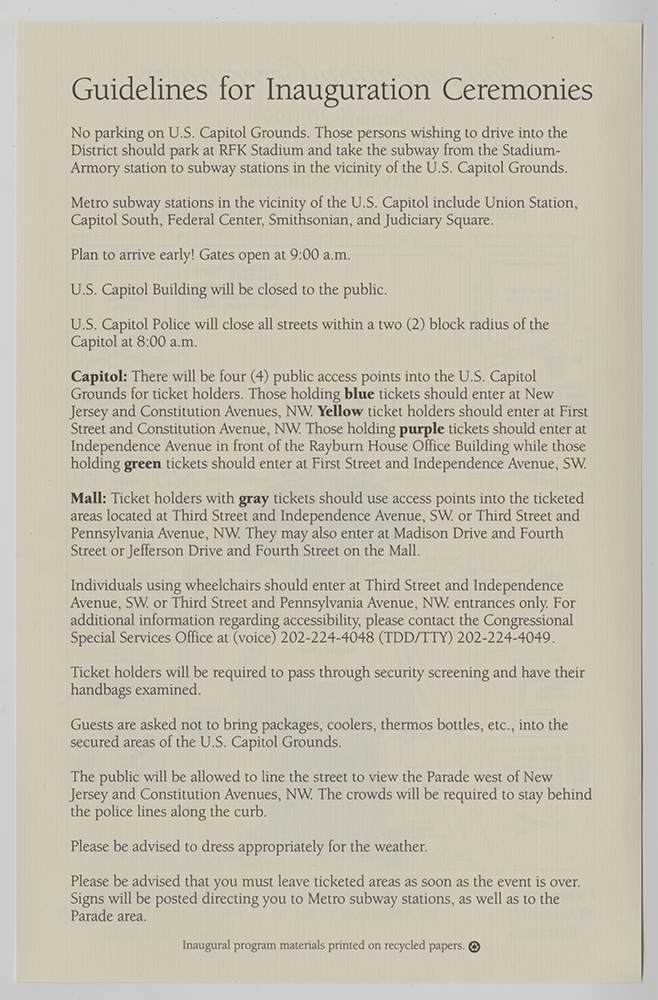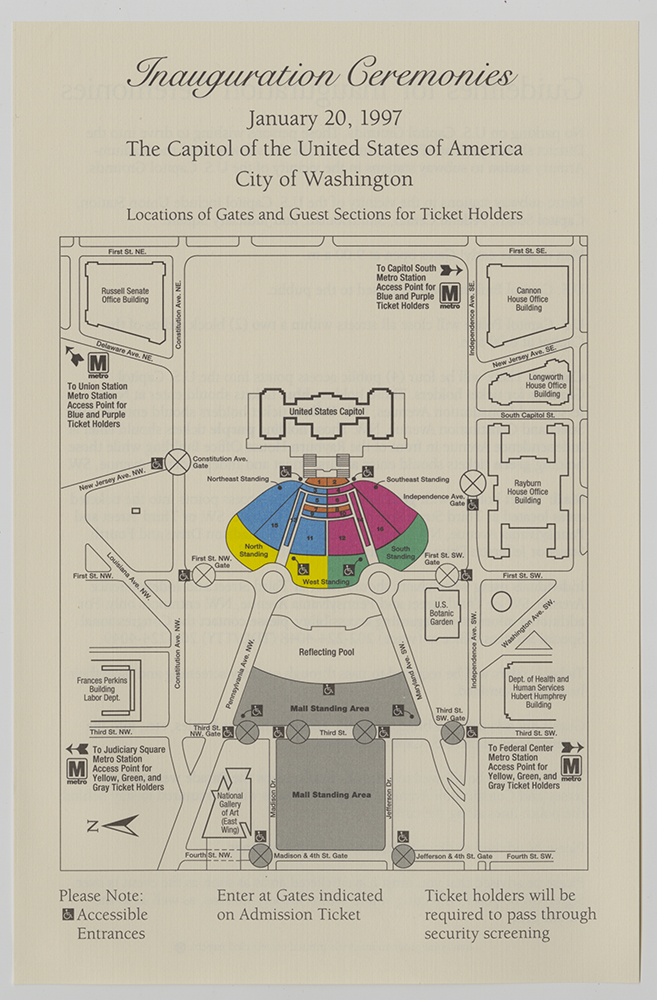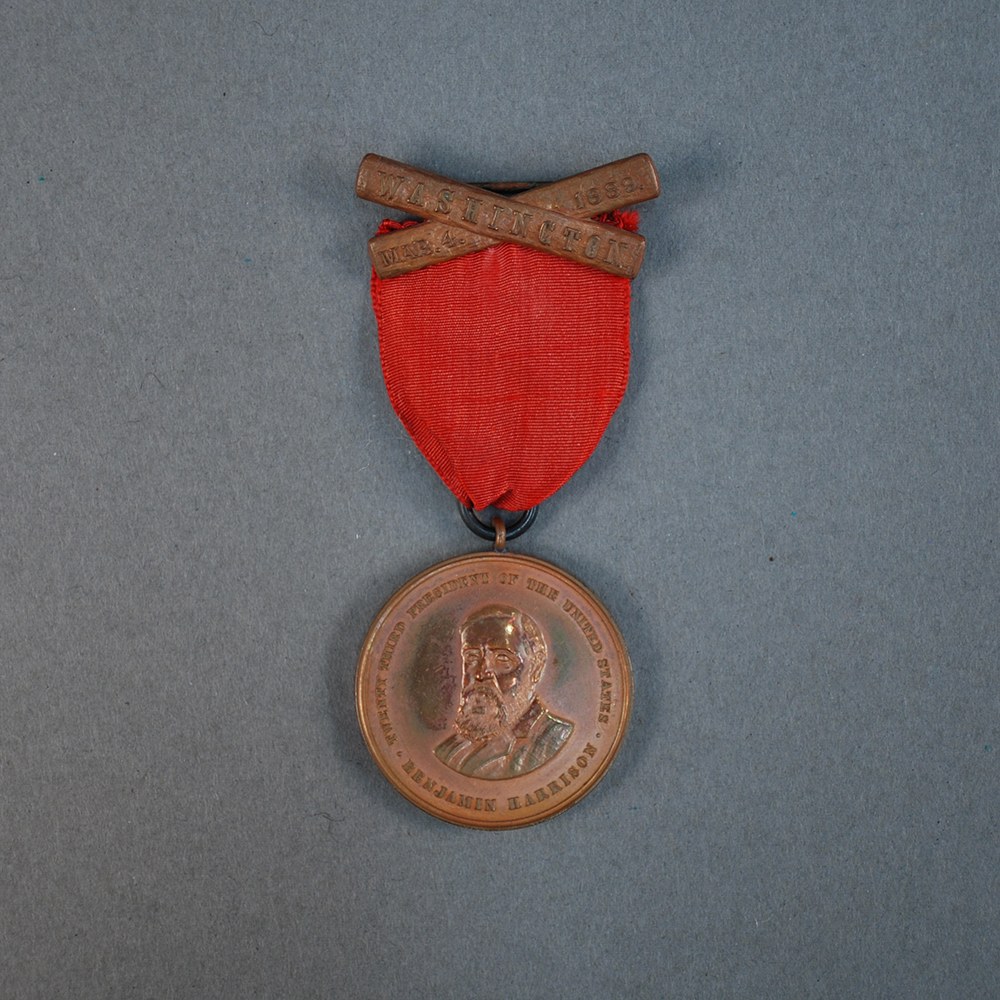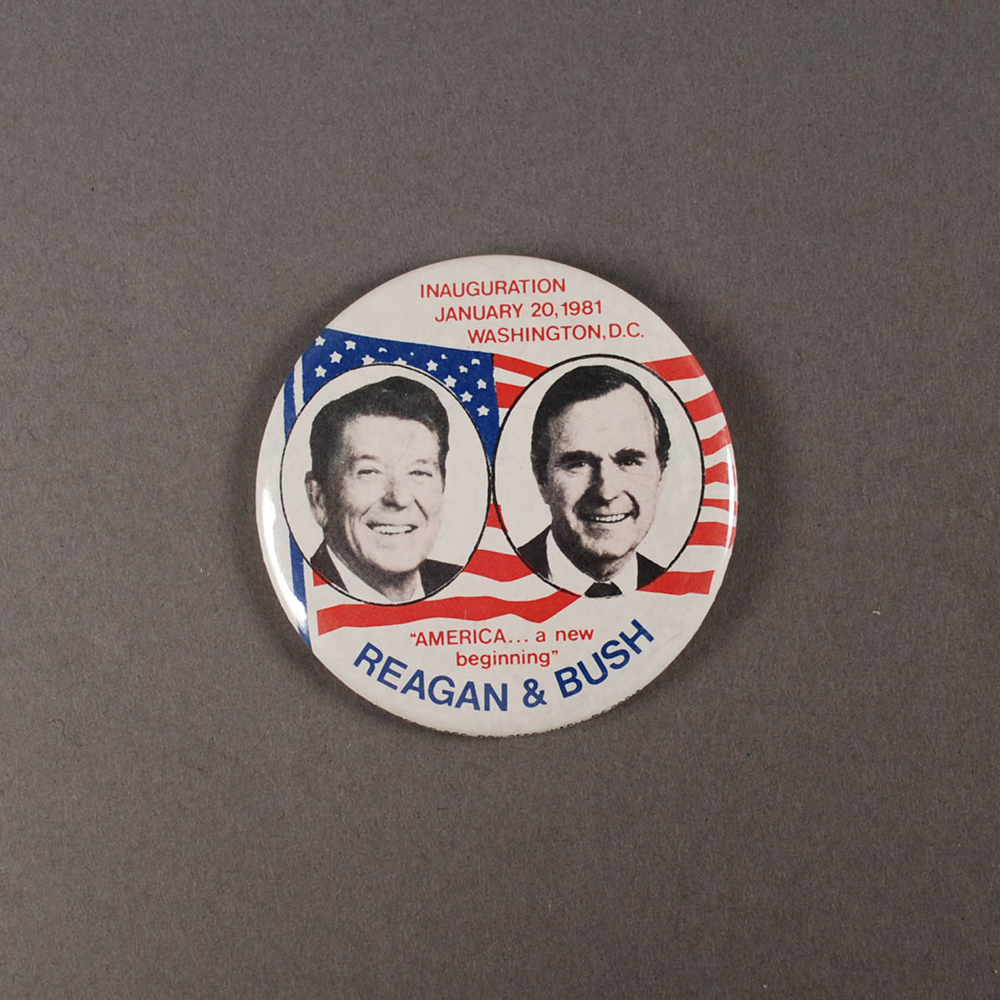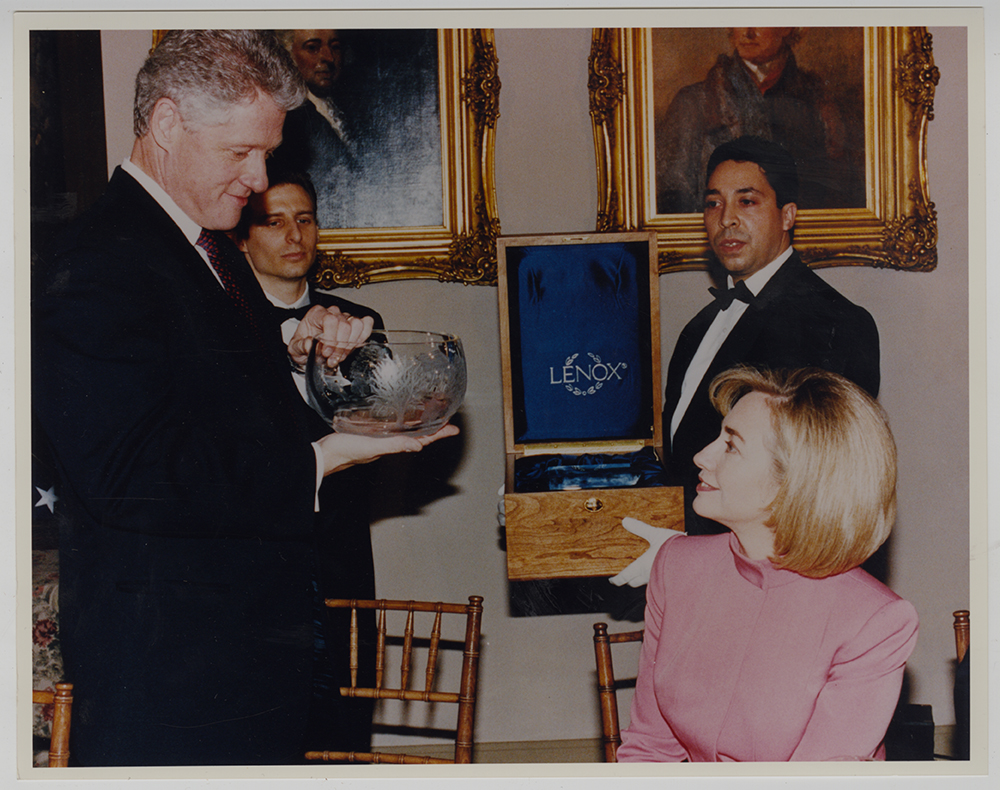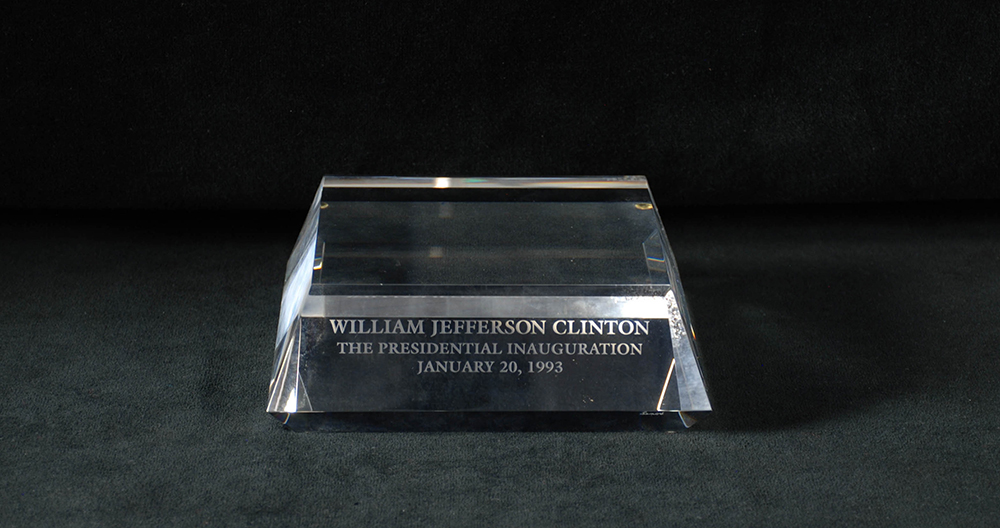For additional presidential inauguration artifacts in the History Center’s collections, please visit The Presidents in Office, an exhibit as part of Google Arts and Culture.
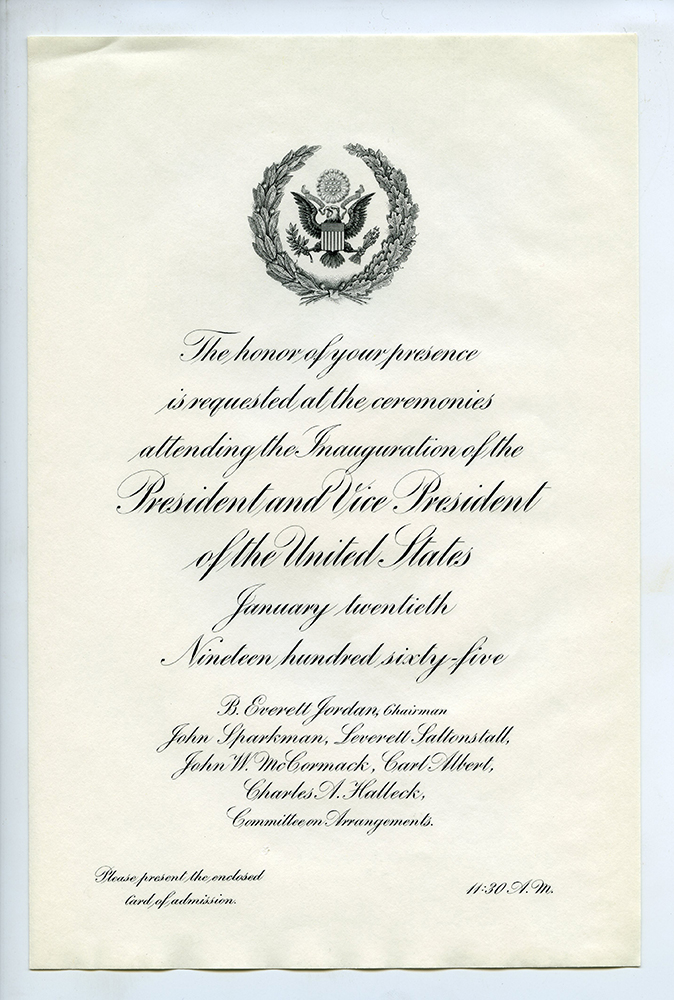
Presidential inaugurations are meaningful moments in our country’s political history. When a new president is elected in the fall, Americans watch on Inauguration Day as power transitions from one elected leader to another. For the outgoing president, the job of a lifetime – with its responsibilities, successes, failures, and joys – end at noon on Inauguration Day. For the president-elect, years of aspiration, the stress of the campaign trail, the intensity of Election Day, and weeks of preparation culminate in this moment, when the job of a lifetime is just beginning.
Inauguration Day 2021 is going to look much different than those in the past, as many traditions were put on hold due to the devastating COVID-19 pandemic and security concerns following the Jan. 6 attack on the U.S. Capitol building by supporters of President Trump. Typically, many of the events at modern inaugurations have roots in traditions set by previous presidents, exceptions being presidents’ deaths or other occasions that have changed the date and venue of some Inaugurations. The oath of office, however, is the cornerstone of Inauguration Day; the oath and the date of the inauguration are the only specifics of the day set by the Constitution. While each day is slightly different, many of the traditions that continue are organized by the Joint Congressional Committee on Inaugural Ceremonies (JCCIC), a bipartisan entity comprised of leaders from the House and Senate, first formed for President William McKinley’s second Inauguration in 1901. The JCCIC works alongside the Presidential Inaugural Committee (PIC), an organization formed by the incoming administration that organizes Inaugural events that take place outside of the Capitol Building, including the traditional parade and official balls. [1]
But what are these events, and what is Inauguration Day like for a spectator? The Heinz History Center has many documents and artifacts that offer a glimpse into this special day.
Inaugural Ceremonies
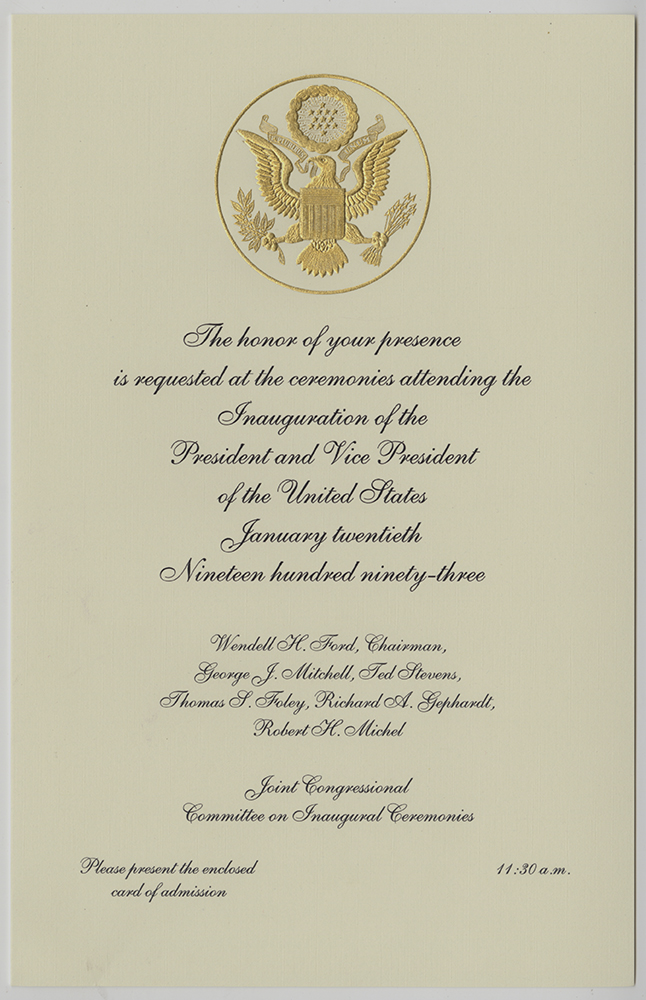
Inauguration Day typically begins with a private religious service attended by the incoming president and his or her family. After this, the outgoing president escorts the incoming president to the Capitol Building to begin the ceremony. This symbolic tradition began with outgoing President Andrew Jackson and incoming President Martin Van Buren in 1837.[1]
Spectators make their way to the west front of the United States Capitol Building for the Inaugural ceremonies. Presidents have taken the oath of office at the Capitol since Thomas Jefferson’s Inauguration in 1801. George Washington’s first Inauguration was in New York City, and he took the oath for the second time in Philadelphia, where John Adams also was inaugurated. Andrew Jackson became the first president to take the oath on the East Front of the Capitol before an enormous crowd [2], as opposed to past inaugurations, where the oath was taken in the Senate Chamber. In 1981, the ceremonies were moved to the West Front to accommodate more spectators and lessen costs for Ronald Reagan’s Inauguration.[3]
Spectators receive the seating map, invitation, and program for the day ahead of time. Invitations are sent out to family, guests, and supporters of the president and vice president, and members of Congress and their constituents. Today, tickets are color-coded for designated seating in sections closest to the Capitol. [4]
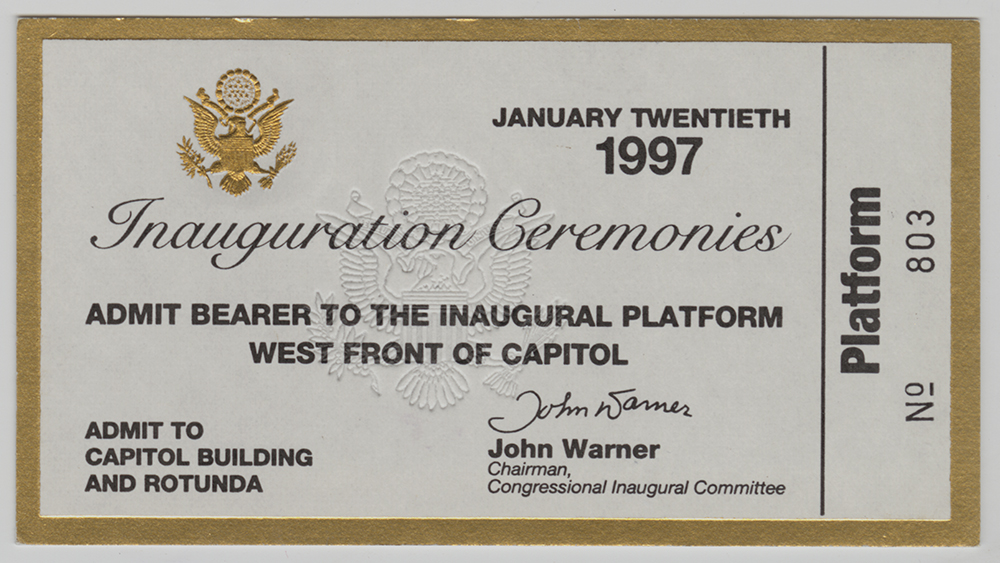
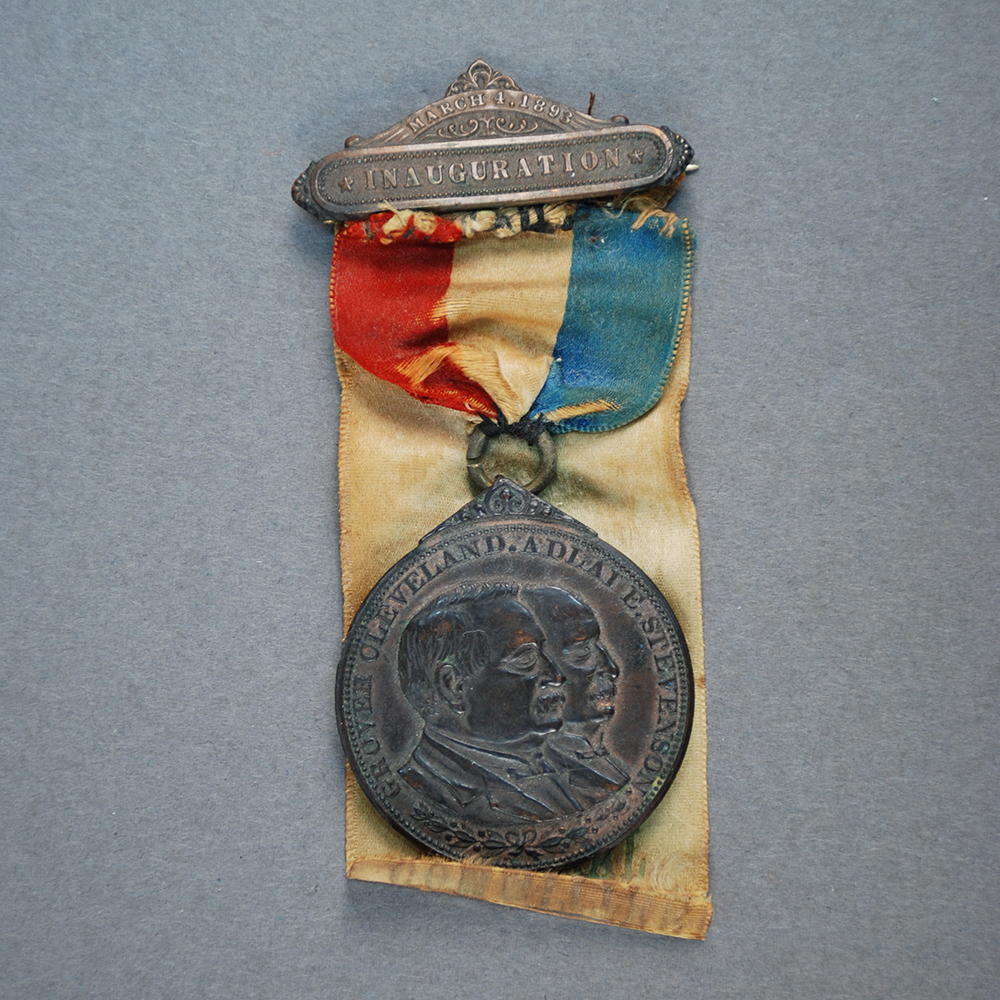
Inauguration Day is typically on Jan. 20, with Jan. 21 as an alternative if the 20th falls on a Sunday. Initially, Presidents were sworn into office on March 4th to ensure votes were completely counted and to give the President-elect enough time to settle affairs at home and make the possibly long, difficult trip from home to Washington D.C. As technology and transportation improved, however, this date created a long, unnecessary “lame duck” session, essentially halting government productivity for months. In 1933, the 20th Amendment made Jan. 20 Inauguration Day.
The ceremony itself can involve religious figures leading prayers, various musical talent, and usually the singing of the national anthem. The vice president-elect takes the oath of office first, followed by the president-elect. The Presidential Oath is the only one set by the Constitution and has been administered by the chief justice of the Supreme Court since President John Adams’s Inauguration.[1] The new president typically gives an inaugural address, a tradition set by George Washington, “to present their vision of America and to set forth their goals for the nation”. Addresses have varied in length and content, and many have provided memorable quotes that are familiar to us today.[2]
Following the oaths, a more recent tradition involves the new president and vice president and their spouses escorting the former president and vice president and their spouses out of the Capitol. The former leaders and their families immediately leave Washington, D.C., another symbolic gesture of a peaceful transfer of power. [3]
Attendees often wear political buttons or badges to show support for the incoming president’s administration.
Presidential Luncheon
Next on the agenda is the Inaugural Luncheon in Statuary Hall, where the new president and vice president, their spouses, and guests enjoy lunch, listen to speeches, and give toasts. This has been an event organized by the JCCIC since 1953, but the tradition goes back to President McKinley’s first Inauguration in 1897.[1]
As part of the lunch, Congress presents the new president and vice president with gifts on behalf of the American people. Since 1989, these gifts have been designed and created by Lenox Corp. in Mount Pleasant, Pa. The Heinz History Center has examples of inaugural gifts, presidential china, and other impressive presidential pieces made by Lenox on display in the Visible Storage exhibit.
Parade
Following the luncheon, there is typically a parade from the U.S. Capitol Building to the White House, led and reviewed by the new president, vice president, and their families. Thousands of spectators line Pennsylvania Avenue to catch a glimpse of the new administration and various entertainers, marching bands, and floats. Inaugural parades began as military escorts, but naturally attracted civilians hoping to take part. The first official parade was held in 1809 for James Madison’s first inauguration.
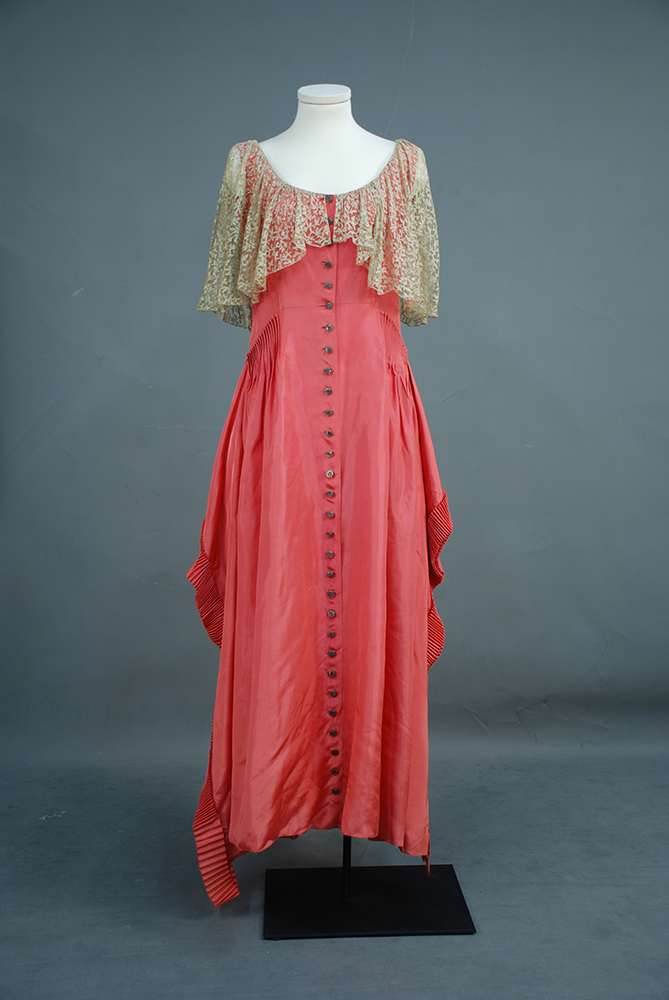
Inaugural Ball
Like the parade, balls have been part of the Inauguration Day celebrations since George Washington’s 1789 Inauguration, with the first official Inaugural Ball held for James Madison in 1809.[1] Historically, the inclusion of an Inaugural Ball appears to have depended on multiple factors, including the president’s preference or the state of the country. For example, Woodrow Wilson attended no balls, while Bill Clinton attended 14 balls for his second inauguration. While there are many celebrations throughout Washington, the new administration only attends official balls, organized by the Presidential Inaugural Committee. [2]
Inauguration Day is significant not only for its present meaning and practice, but also its place in history. Each Inauguration is unique to the new president’s preferences, while steeped in traditions that began as early as George Washington’s presidency. This day reminds us of our country’s political beginnings, when the peaceful transfer of power from one democratically elected leader to another was not typical, and made America unique. For students of history, this day also offers glimpses into specific time periods—who attended the ceremonies? How did timely events affect the inauguration proceedings? What has changed over time, and why were these changes made? While inaugurations may be adapted for our modern era, the connection to our young democracy remains strong.
Carrie Hadley is a collections associate at the Heinz History Center.
Sources & Further Reading
White House Historical Association
Joint Congressional Committee on Inaugural Ceremonies website
[1] About the Committee, Joint Congressional Committee on Inaugural Ceremonies, accessed January 17, 2021. See also, Partners, Joint Congressional Committee on Inaugural Ceremonies , accessed January 17, 2021.
[2] Procession to the Capitol, Joint Congressional Committee on Inaugural Ceremonies, accessed January 6, 2017.
[3] Not a Ragged Mob- The Inauguration of 1829, White House Historical Association, accessed January 9, 2017.
[4] The President’s Swearing-In Ceremony, Joint Congressional Committee on Inaugural Ceremonies, accessed January 17, 2021.
[5] JCCIC Chairman Blunt Unveils Tickets for 58th Presidential Inaugural Ceremonies, Joint Congressional Committee on Inaugural Ceremonies, accessed January 17, 2021.
[6] Korbel Champagne Cellars – The Toast of the Inaugural Luncheon, Korbel Champagne Cellars, accessed January 6, 2017.
[7] 3rd Inaugural Ceremonies, Joint Congressional Committee on Inaugural Ceremonies, accessed January 17, 2021.
[8] Inaugural Address, Joint Congressional Committee on Inaugural Ceremonies, accessed January 17, 2021.
[9] Honorary Departure, Joint Congressional Committee on Inaugural Ceremonies, accessed January 17, 2021.
[10] Inaugural Luncheon, Joint Congressional Committee on Inaugural Ceremonies, accessed January 17, 2021.
[11] Katie E. Marages, Inaugural Balls: From Their Beginnings, White House Historical Association, accessed January 17, 2021.
[12] Alicia Ault, Ask Smithsonian: When Was the First Inaugural Ball?, Smithsonian Magazine, accessed January 17, 2021.

